Prep Time = Low-Maintenance Landscaping
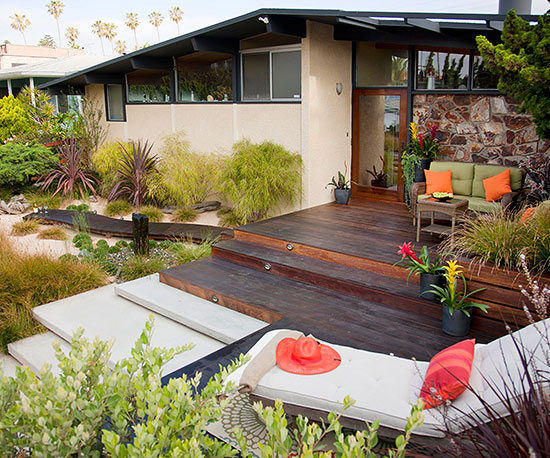
Experts agree: Extra hours on the front end pay dividends later when it comes to creating a low-maintenance backyard. "By far, bed prep makes a difference for years to come," says Will Stribling, who owns Sutter Landscapes, LLC, a Design/Build & Maintenance firm in North Carolina.
That includes a couple of steps:
- Get your soil tested. A yearly analysis helps you know how to amend your flower beds for better growth—which helps you boost your low-maintenance landscaping.
- Start with a plan. Measure your yard and divide it into zones for play and growing, as well as entertaining and relaxing. Plot out large structures such as paved areas and trees and shrubs, too.
- What do you have, what do you want, and what do you want to change? Those are the three questions that Madeline Ann Sutter, with Sutter Landscape Architects & Gallery in North Carolina, asks when she meets a new client. "It's a way of helping the client collaborate in the design of her outdoor space," Sutter says. For example, a garden can be designed to take as little maintenance as possible, but only if you're honest about your lifestyle. You may love roses, but they may not be the best plant if you don't want to fuss with their upkeep. Instead, a carefully chosen tree or two, or well-sited drift of one type of perennial is a good beginning to test your ability to care for a garden. In addition, if there's room in your budget, hire some of the more labor-intensive tasks to reduce your time commitment, too.
Learn more about soil testing.
Get tips for evaluating your yard.
continue reading below
The Right Plants = Low-Maintenance Landscaping
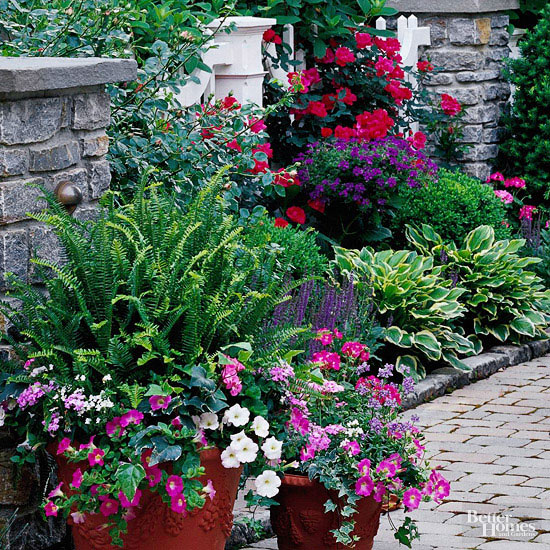
If you want a low-maintenance backyard that gives you plenty of time to enjoy the outdoors, start with the right plants. As a guide:
- Pick varieties for your USDA Hardiness Zone. If it's too tender, it won't last, and you'll be frustrated.
- Choose plants that need less water. Particularly in stressful hot-weather weeks, watering can be a labor-intensive chore.
- Analyze your yard, and plant to its conditions. Notice patterns of moisture on low-lying areas, and patterns of sun/shade when trees leaf out. Plant accordingly to ensure yourself the best chance at a maxed-out low-maintenance landscape.
- Buy healthy plants from a reputable grower. Both Sutter and Stribling recommend purchasing plants from a nursery that knows plants and their habits and can answer questions about performance and whether it's a good fit in a low-maintenance landscape. "This is your assurance that the plants are disease-free and have been well tended since the start of their lives," Sutter says. Video: Watch tips for picking healthy plants.
- Research a plant's needs. A newly planted tree may seem small in the existing landscape, but that changes. If you pick an ill-suited spot or stuff too many plants in one space, you'll pay the price in unhealthy results. Tend your plants well and place them in a site they're suited for, and in time you'll be rewarded with healthy, beautiful flowers, shrubs, vines, or roses.
- Use our Plant Encyclopedia to research your plants.
Good Building Blocks = Low-Maintenance Gardening
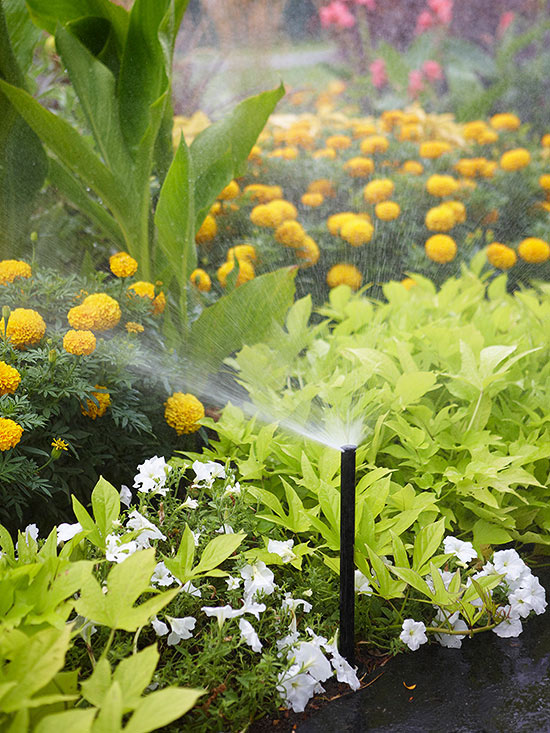
The basics will get you a long way toward a goal of low-maintenance landscaping. They include:
- Test your soil. An analysis through your local county extension office will help you determine how to amend your soil so that your plants get the right nutrients and have good drainage.
- Mulch. Mulch is a low-maintenance gardener's best friend: It keeps down weeds and helps the soil retain moisture. Refresh yours at least once a year.
Learn more about mulch.
Use our mulch calculator.
- Monitor rainfall to ensure your plants receive about one inch per week, or automate your irrigation. Options include professional installation, as well as a few soakers and emitters with a timer. "Instead of having to redo things from the ground up, you'll always have a good base, and it can make the difference between good results and nightmarish results," Stribling says. "They're worth their weight in gold, and there are really efficient ways to do it. Water has gotten quite expensive and maximizing that is by far worth it. If a garden is watered well in its first couple of years, by the third or fourth year it can exist on its own with minimal supplemental watering."
- Buy the right tools and equipment. Tools make quick work of what would otherwise be time-consuming tasks. Do your research and find the right pruning, digging, raking, and other equipment that can help you make a low-maintenance landscape. Keep your tools sharp and clean to prevent potential spread of disease.
See our list of must-have garden tools.
Learn to sharpen your tools.
See even more maintenance tips to save you time and work.
Regular Plant Maintenance = Low-Maintenance Landscaping
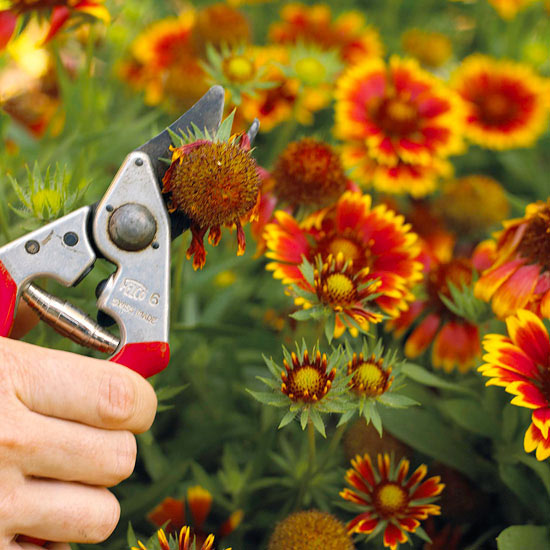
Before you even create a backyard landscape, you need to create a plan. And when it comes to low-maintenance landscaping, a good idea of steps to take will have you working less. They include:
- Maintenance changes: The first couple of years of a new landscape can be fairly maintenance heavy. But patience, persistence, and care pay off, Stribling says, for a low-maintenance landscape. "Don't be unrealistic; have patience and the garden will run itself in a few years," he says.
- Go for fewer plants with big impact: "A lot of people will take this brand new bed and crowd it with 30 to 40 things," Stribling says. Instead, think less is more: A few big-deal trees and a drift of the same high-performance, perennial can pay off to make a low-maintenance backyard. "You get to decrease maintenance dramatically," he says.
- Tend to problems when they happen: Let plants get stressed by disease, lack of water, or over-fertilizing, and they'll require more care. Instead, create a low-maintenance landscaping schedule -- formal or informal -- to stay on top of problems. For example, walk around your yard every few days to pull stray weeds, deadhead here and there, and make sure nothing looks diseased or dying. "What I learned the hard way and what I tell every client is 'Call me before, don't call me later,'" Stribling says. "A garden is like a closet: Let it get too cluttered and it's way out of hand and you won't want to deal with it. Maintain a routine, and it won't have such an easy time getting away from you."
- Learn what your plants need: Prune an oak tree during warm weather and you invite disease. Transplant peonies in spring and they may not bloom the following year. The things that you don't know about your plants can become harder to deal with and go a long way toward preventing you from learning to make a low-maintenance landscape. "If you do things too early or too late, you won't get the best results," Sutter says.
Check out our regional gardening guides for information specific to your yard.
Lawn Alternatives = Low-Maintenance Landscaping
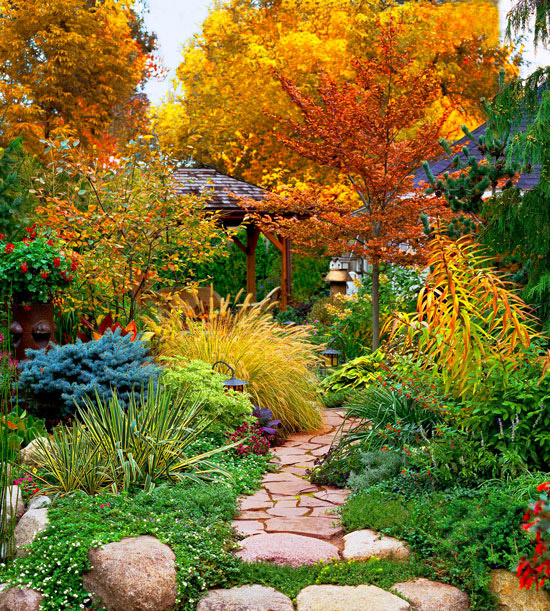
Lawn is a maintenance-intensive addition to a backyard. Minimize yours by creatively using groundcover and flowerbeds in areas where a stretch of grass isn't necessary. You'll eliminate fertilizing, mowing, aerating, and other tasks associated with lawn upkeep.
Check out these top groundcovers.
Finally: Remember to make it beautiful.
A beautiful backyard is one you want to be in and one in which everyday maintenance tasks don't seem so burdensome. "I'm in my landscape just to enjoy it all the time," Sutter says. "I tell people to have something in their landscape that draws them there regularly, another room to go to that they enjoy. Then the garden will keep you wanting to go out there, and you'll take care of it."










